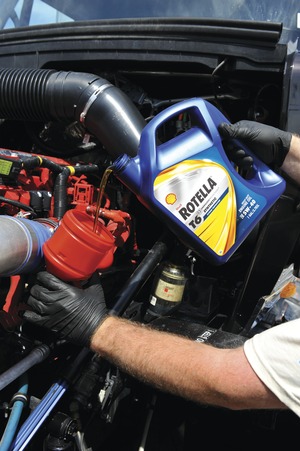
Engine manufacturers, the oil industry and engine lubricant makers are developing a new category of oils for diesel engines to help meet tomorrow's emission and fuel economy standards.
The U.S. Environmental Protection Agency and the National Highway Traffic Safety Administration announced in August 2011 that they will begin regulating in 2016 fuel economy and greenhouse-gas emissions for on-road trucks. The new rules were the culmination of a May 2010 presidential memorandum calling for the first-ever regulation of on-road greenhouse-gas emissions, including CO2.
Efforts to meet other emissions standards and fuel-efficiency criteria have driven recent advances in diesel-engine technology that, alongside the adoption of ultra-low-sulfur diesel, have resulted in significant drops in particulate matter and NOx emissions. These evolving diesel- engine designs already had industry groups concerned that CJ-4, the current certification standard for lubricants introduced in 2006, is becoming obsolete.
"[The EPA announcement] wasn't the only reason for a new standard, but it certainly … pushed it over the edge," says Roger Gault, technical director with the Truck and Engine and Manufacturer Association (EMA). "We're not having major problems with CJ-4 lubes, but some tests need to be replaced because of hardware reasons, and some heavy-duty engine manufacturers are going to migrate to lower-viscosity oils to meet efficiency requirements."
In June 2011, EMA first requested a new standard, known as Proposed Category-11, then formed a committee of industry representatives, which began meeting in February. The first licensing deadline for new lubricants is Jan. 1, 2016. "It's kind of in its infancy right now. A new category takes about four years to develop," Dan Arcy, OEM technical manager for Shell Global Solutions and a member of the PC-11 evaluation team, told ENR at a Shell-sponsored press event in Park City, Utah. "For those four years we're going to be very, very tight, but it is doable."
The relationship between engine lubricant and overall fuel economy depends on the design of the engine. Engine manufacturers see lubricants as a potential way of improving fuel economy in the future.
While PC-11 is still not fully formed, one idea being floated is the introduction of two subcategories: lower-viscosity lubricants that have some demonstrable fuel economy benefit and more traditional, higher-viscosity oils. "Think of our current oil, which is a thick oil, and a thin oil, which is the oil of tomorrow," says Arcy. All of these lubricants will be subject to the same durability standards under PC-11, but Arcy and the rest of the team are looking at how to accommodate engine manufacturers' varied solutions to fuel economy requirements.

Post a comment to this article
Report Abusive Comment